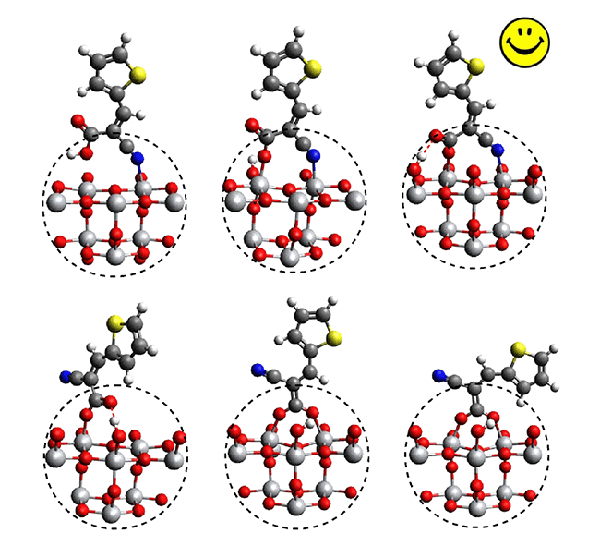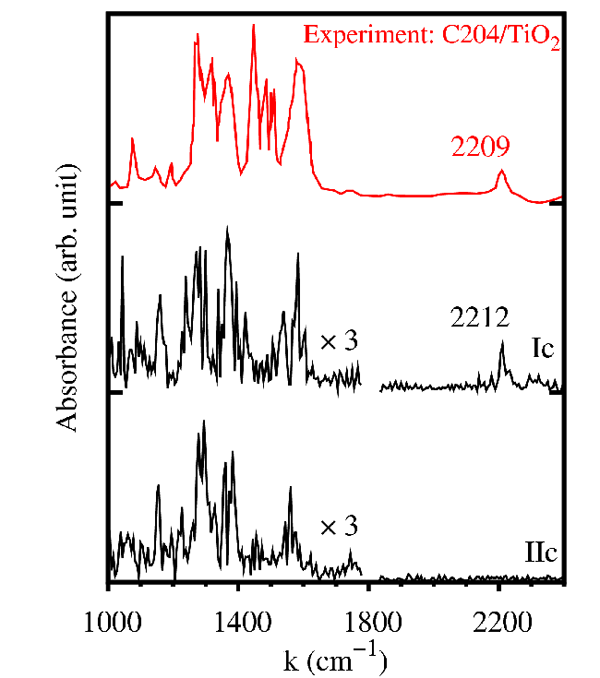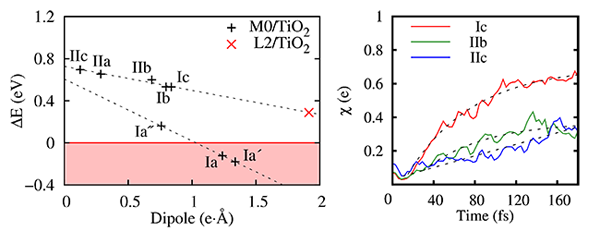Research Institute of Physics and other organic-based solar cells made a series of progress
Solar cells based on organic molecules have received widespread attention in recent years as the most promising alternative to traditional high-cost monocrystalline solar devices. Organic molecules have the advantages of high extinction coefficient, non-toxic, easy synthesis, and low price. At present, these batteries have more than 13% energy conversion efficiency (under 50% sunlight) and long-term stability. Although a large number of experimental studies have revealed the macroscopic properties of organic molecular solar cells, such as voltammetric characteristics, spectra, and film morphology, images on the microscopic scale regarding the interface structure of organic molecules and the energy conversion mechanism are still lacking. This hinders people from further improving solar cell performance.
Institute of Physics, Chinese Academy of Sciences/Beijing National Laboratory for Condensed Matter Physics, Ph.D. students Jiao Yang, Zhang Fan, Ding Zijing, and Meng Sheng and colleagues recently conducted detailed theoretical and experimental studies on the mechanism of solar cells based on organic molecules. Using time-dependent density functional theory simulations involving excited state information, they found that the energy level of the molecule at the interface of TiO2 is modulated by the vibration of the interface chemical bond, which directly affects the kinetic process and efficiency of the injection of excited electrons into the semiconductor [Phys. Chem. Phys. 13, 13196 (2011)].
Then, they collaborated with Dr. Ren Jun of Tsinghua University and Professor E. Kaxiras of Harvard University to analyze the atomic structure and electronic coupling of the typical interface of organic solar energy, C60/CuPc. They found that the different molecular arrangements (horizontal or vertical) at the interface have little effect on the absorption of solar light, but they play an important role in the arrangement of electronic energy levels. The horizontally-aligned C60/CuPc interface has two levels of molecular energy that are closer to each other and provide a voltage higher than about 0.3 V compared to the vertical alignment interface. This has an important impact on improving the efficiency of solar energy conversion. The results were published in Nano Research 5, 248 (2012).
They further studied the effect of the atomic structure of a pure organic molecule containing no metal on the interface of TiO2 to the efficiency of the organic dye solar cell formed. This type of molecule generally adopts the structure of the Donor-Ï€-Acceptor and mostly binds to the surface via cyanoacrylic groups. Although this type of molecule has been widely used, its adsorption structure is not clear. Previously, it was generally believed that this type of organic dye was similar to the dye of the traditional ruthenium complex and was adsorbed on the TiO2 surface only through the carboxyl group. Based on first-principles molecular dynamics and time-dependent density functional theory calculations, Jiao Yang et al. studied the adsorption of organic molecules containing cyanopropene groups on the anatase TiO2 (101) surface with Professor Michael Graetzel of the Swiss Federal Institute of Technology. And electron dynamics (Figure 1). Through the detailed analysis of the vibrational spectrum obtained by the kinetic simulation and the comparison with experimental infrared absorption spectra (Fig. 2), they found that both cyano and carboxyl groups participate in surface adsorption, and this adsorption configuration is very favorable for solar energy conversion.
The calculation results show that this newly proposed surface configuration containing Ti-N bonds by co-adsorption of cyano and carboxyl groups is the most energy-stable (Figure 1). This has changed people's general understanding: cyano plays a key role in adsorption, and its influence on interface stability and electrochemical properties is often overlooked. Through electronic structure calculations and excited-state electron-dynamic simulations, they further studied the electronic coupling, energy level relative positions of dye molecules and surfaces in this newly proposed sorption configuration, and their effects on solar cell voltage and current. The dynamic process of light-excited electrons injecting from the dye molecules onto the TiO2 surface shows that the new configuration is conducive to the rapid injection of electrons and has a high quantum efficiency, and is more conducive to a higher operating voltage in the electronic structure (Figure 3). Ensure that such solar cells have a high energy conversion efficiency (~10%). These work have established the relationship between microscopic structure and macroscopic performance in the interface energy conversion mechanism at the atomic scale, and provided new methods for microscopic control, optimization and improvement of solar energy conversion efficiency. The relevant results were published in Advanced Functional Materials, DOI: 10.1002/adfm.201201831.
The above research work has been supported by the National Natural Science Foundation of China, the Ministry of Science and Technology, and the 100-person project of the Chinese Academy of Sciences.

Figure 1 Different adsorption configurations of organic molecules on the TiO2 surface. The first row (Ia, Ib, Ic configuration from left to right): Adsorption configuration with Ti-N bond; Second (IIa, IIB, IIc configuration): Adsorption without Ti-N bond structure. The top right corner is the newly discovered, stable configuration.

Figure 2 The vibration spectrum of the sorption structure obtained by experimental and theoretical calculations. The Ic configuration agrees well with the experiment.

Figure 3 Left: Relationship between different configurations and open circuit voltage. The abscissa is the interface dipole moment of this configuration, and the ordinate is the difference ΔE between the molecular excitation level and the conduction band low. The smaller ΔE, the greater the open circuit voltage. The Ic voltage is higher in the stable configuration. Right: Electron injection kinetics for different configurations. The solid line is the electron-ion coupled molecular dynamics simulation result based on the time-dependent density functional theory, and the dashed line is the exponential fit to the simulation data. Ic has a faster injection time and a higher quantum yield.
(1)Pruning shear is ideal for cutting stems,light branche,grass,flower thron and ect.
(2)Fully hardened, precision-ground steel blade stays shrill, even through heavy use. Handles have a nice pattern which makes the pruners easy to hold onto and there's a nice sound of the blades very precisely sliding past each other.
The hook is easy to use and very accessable, making one hand operations a breeze. The best thing about these is that they'll fit in your back pocket and stay locked.
(3)Low-friction coating helps blade glide through wood, prevents the blades from gumming up with sap and debris and helps the blades resist rust.
(4)Maximum cutting capacity: 3 inch diamater
Self-cleaning sap groove keeps the blade from sticking for easy operation.
Tape Measure Spring,Bending Tape Measure Spring,Small Bending Tape Measure Spring
Wintape Measuring Tape Company , https://www.wintapetape.com